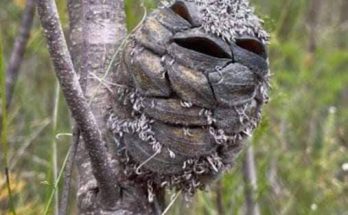In the stillness of attics, closets, and shadowy corners of the basement, danger can quietly lurk — not from something large or loud, but from a tiny, reclusive spider with an infamous reputation. The brown recluse spider, sometimes called the “violin spider,” isn’t out to hurt anyone — but if startled or threatened, its bite can have serious consequences.
If you’re over 60 and live in the southern or midwestern U.S., this is one household risk you should be aware of. Not because it’s likely to happen — but because if it does, you need to act quickly.
Meet the Brown Recluse: Small but Dangerous
You might not even notice one until it’s too late. The brown recluse spider is a modest-sized creature, typically no bigger than a dime. Its appearance is unassuming: a velvety brown color, long legs, and a body that blends seamlessly with wood, cardboard, or dust-covered fabrics.
But there’s one thing that gives it away: a violin-shaped marking right behind its head. This signature feature is what earned it the nickname “fiddleback” or “violin spider.”
Unlike most spiders, which have eight eyes arranged in two rows, the brown recluse only has six. It belongs to a family of spiders known scientifically as Loxosceles, and it prefers dark, undisturbed environments — exactly the kind of places many of us avoid cleaning regularly.
Why Is the Brown Recluse So Dangerous?
Most spider bites are annoying at worst, but the brown recluse is in another category entirely. Its venom isn’t neurotoxic like a black widow’s — it’s cytotoxic. That means it destroys cells, and the results can be startling.
Here’s what happens after a bite:
- At first, you might feel nothing at all. The bite is often painless.
- Within hours, redness, swelling, and a small blister may develop.
- Over the next day or two, the surrounding tissue can begin to die — a condition called necrosis.
- In severe cases, this leads to an open wound, sometimes requiring medical treatment or even surgery.
- Other symptoms can include fever, chills, nausea, and general fatigue.
Not every bite leads to this kind of damage — many resolve on their own — but in vulnerable individuals, including older adults or those with weakened immune systems, the risk of complications increases.
Where Do Brown Recluses Hide?
These spiders aren’t aggressive. In fact, they go out of their way to avoid humans. But they do love quiet, undisturbed places — the kinds of spots many seniors store seasonal clothes, old books, or keepsakes.
Common hiding places include:
- Old shoes left in closets
- Unused clothing drawers
- Under beds or sofas
- Boxes stored in attics or basements
- Behind picture frames or furniture
- Garden sheds and woodpiles
If you live in or travel through regions like the Midwest or South — including states like Texas, Missouri, Oklahoma, Arkansas, and Kentucky — be extra cautious. This is their native habitat.
What to Do if You’re Bitten
The worst thing you can do is ignore a bite, especially if you suspect a brown recluse might be involved. If you notice a small wound that’s getting worse instead of healing, seek medical attention right away.
Here’s what experts recommend:
- Wash the bite area gently with soap and water.
- Apply a cold compress to reduce swelling and pain.
- Keep the affected area elevated if possible.
- Avoid using heat — it can worsen tissue damage.
- Don’t try to cut out the venom or suck it out. That can cause more harm than good.
- Seek medical help immediately if symptoms spread or worsen.
Doctors may prescribe antibiotics, corticosteroids, or pain relief. In extreme cases, surgical intervention might be needed to remove dead tissue.
Prevention Tips for Seniors and Caregivers
Keeping your home free of these spiders doesn’t require anything drastic — just some regular attention and smart habits.
Protect yourself and your loved ones with these simple steps:
- Shake out clothes and shoes that have been stored for a while before wearing them.
- Use sealed containers instead of cardboard boxes for long-term storage.
- Declutter your home — spiders love piles of clothes, paper, and rarely-moved furniture.
- Keep beds away from walls and don’t let bedding touch the floor.
- Install sticky traps in corners of garages, basements, and closets to monitor activity.
- Wear gloves when working in sheds, garages, or when handling firewood.
If you suspect a serious infestation, don’t hesitate to call a professional exterminator. One bite is bad enough — you don’t want to risk another.
Not Every Brown Spider Is a Brown Recluse
One last note of caution: many spiders are brown. That doesn’t mean they’re all dangerous. The brown recluse is unique — and while it does live up to its name by keeping to itself, the fear it causes can lead to unnecessary panic.
If you’re uncertain about a spider you’ve seen in your home, capture it (safely, if possible) and have it identified by an expert or pest control professional. Photos can also be sent to university extension offices or local entomology departments for identification.
Stay Calm, Stay Aware
The brown recluse is not out to get you. In most cases, people are bitten accidentally — when putting on old shoes, moving storage boxes, or reaching into dim cabinets. But knowing what to look for, where they hide, and what to do if bitten can help you stay protected.
At any age, knowledge is your first defense. If you’re a caregiver or family member of someone older, take a few minutes to check the more neglected areas of their home — or yours.
Because while the brown recluse is shy… its bite is anything but.



